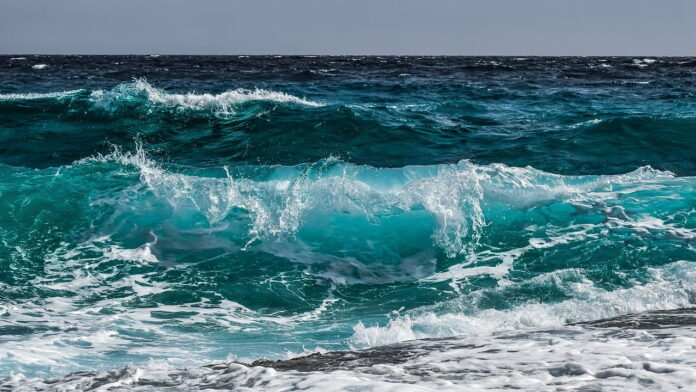The Earth’s oceans are not only vast expanses of water but also complex ecosystems that play a crucial role in supporting life on our planet. However, beneath the waves lies an invisible threat that is as severe as it is overlooked: ocean deoxygenation. This phenomenon, characterized by a decline in the amount of dissolved oxygen in marine environments, poses significant risks to ocean health and biodiversity.
Understanding Ocean Deoxygenation
Ocean deoxygenation refers to the loss of oxygen from the Earth’s oceans. This process is primarily driven by two main factors: increased surface water temperatures due to global warming and nutrient pollution leading to eutrophication. Warmer water holds less dissolved oxygen, and as the oceans absorb heat from the atmosphere, their capacity to support life diminishes. On the other hand, nutrient runoff from agriculture, wastewater, and industrial processes can stimulate an overgrowth of algae. When these algal blooms die off, their decomposition consumes vast amounts of oxygen, creating hypoxic conditions that can suffocate marine life.
The intricacies of ocean deoxygenation are compounded by the fact that it can also be influenced by natural phenomena such as ocean currents and stratification. The mixing of ocean layers is crucial for the replenishment of oxygen in deeper waters. However, as the surface of the ocean warms, this stratification intensifies, reducing the vertical mixing and further exacerbating oxygen depletion. This disruption not only impacts the immediate environment but can also have cascading effects on global oceanic circulation patterns, which are instrumental in regulating climate.
Understanding ocean deoxygenation requires a multi-faceted approach that involves monitoring oxygen levels, assessing the contributions of anthropogenic activities, and evaluating the resilience of various marine species to low-oxygen conditions. Continuous research is needed to unravel the complex interactions between climate change, oceanic processes, and human actions that lead to deoxygenation, and to identify the most vulnerable regions and ecosystems.
Impacts of Reduced Oxygen Levels
The consequences of ocean deoxygenation are far-reaching and can lead to a decline in biodiversity, altered species distributions, and disrupted food webs. Areas of the ocean where oxygen levels have dropped significantly, known as “dead zones,” are particularly concerning. In these hypoxic zones, most marine life cannot survive, resulting in a loss of habitat and a decrease in the overall productivity of the ecosystem. Species that are unable to move to areas with higher oxygen levels face extinction, which can have a ripple effect throughout the food chain.
Reduced oxygen levels can also lead to the proliferation of certain species over others, potentially leading to imbalances in the ecosystem. For example, jellyfish, which are more tolerant of lower oxygen conditions, may thrive and outcompete other marine animals for resources. This shift in species dominance can alter the ecological balance and affect the availability of resources for higher trophic level organisms, including fish that are important for commercial and subsistence fishing.
The impact of deoxygenation extends beyond the marine environment, affecting human communities that depend on the ocean for their livelihoods, food security, and cultural heritage. Fisheries may experience declines in stock due to the loss of breeding and feeding grounds, which can have economic repercussions and threaten food supplies. Additionally, the loss of biodiversity and ecosystem services can impair the ocean’s ability to sequester carbon, potentially exacerbating climate change and its associated impacts on coastal communities.
Strategies to Combat Deoxygenation
Addressing ocean deoxygenation requires a multifaceted approach that includes both global and local strategies. At the international level, reducing greenhouse gas emissions is paramount to slow the rate of global warming and, consequently, the warming of ocean waters. This can be achieved through the adoption of clean energy sources, enhanced energy efficiency, and the implementation of policies aimed at reducing carbon footprints. Additionally, international collaboration on monitoring and research can provide deeper insights into deoxygenation patterns and help identify critical areas in need of protection.
Locally, managing nutrient runoff is crucial in preventing eutrophication and the formation of dead zones. This can involve improving agricultural practices to reduce fertilizer use, upgrading wastewater treatment facilities, and restoring wetlands that can naturally filter out excess nutrients before they reach the ocean. Furthermore, establishing marine protected areas (MPAs) can help to safeguard vulnerable ecosystems, allowing them to recover and build resilience against low-oxygen conditions.
Public awareness and education are also vital components of the strategy to combat ocean deoxygenation. By informing the public about the causes and consequences of deoxygenation, individuals and communities can be empowered to make more sustainable choices and support conservation efforts. Engaging stakeholders, including fishermen, policymakers, and the general public, in the management and decision-making process ensures that the strategies implemented are effective and have the backing of those most affected by the changes in ocean health.
Ocean deoxygenation is an insidious threat to marine ecosystems and the services they provide to humanity. It is a multifaceted issue that requires a comprehensive understanding, international cooperation, and targeted local action. As we continue to grapple with the effects of climate change, it is crucial that we recognize and address the unseen peril of deoxygenation to protect the health of our oceans. Through concerted global efforts to reduce greenhouse gas emissions and local initiatives to manage nutrient pollution, we can work towards restoring the balance of oxygen in our oceans and preserving their biodiversity for future generations. The path forward is clear: we must act with urgency and determination to tackle the silent crisis of ocean deoxygenation.
